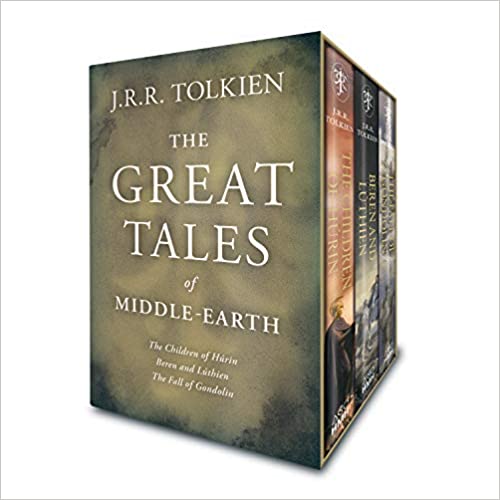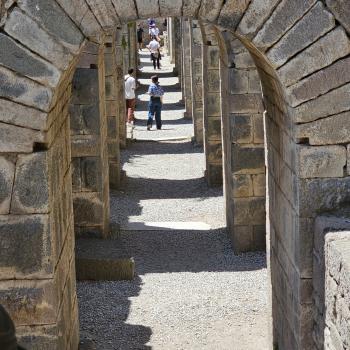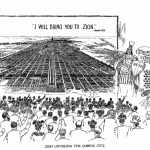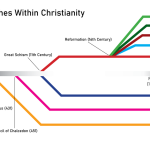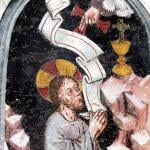For diehard Tolkien fans like me, it was a no brainer that I would buy and read the Silmarillion many years ago, as a labor of love of Christopher Tolkien sifting through the many unpublished stories and manuscripts of his father. We owe Christopher a considerable debt because his father was, to be blunt, a tinkerer. He would create multiple versions of the same story, and in the case of the stories in the handsome 3 volume set called The Great Tales, he worked on them both in the 20s-30s, and even after he had originally published the Lord of the Rings when I was a wee lad, in 1953-54. Christopher became the executor of his father’s literary estate and has served us all well in reading many many pages of his fathers unpublished handwritten work. It reminds me of Poe’s old poem ‘As I ponder weak and weary, over many a volume of forgotten lore….’ I can empathize with him because I performed the same task for the unpublished manuscripts of another great British scholar and writer, J.B. Lightfoot. It’s amazing I didn’t go blind.
All three of the tales in this three volume set are at least alluded to in the Silmarillion, so actually it would be wise to purchase it and read it first. Watchers of the Hobbit film trilogy of Peter Jackson will hear some familiar rings as well when they read The Great Tales though I am still upset with Jackson for not including Tom Bombadil in that trilogy somewhere, one of Tolkien’s great characters.
All three of the volumes in The Great Tales came out in the Fall of 2018 as a beautiful boxed set with original illustrations by Alan Lee. He had previously illustrated the anniversary edition of LOTT in 1992, and subsequently done further editions of the Hobbit as well. Sadly, Christopher Tolkien died this past January 2020, but not before finishing publishing so many of his father’s backstories to the Hobbit and The Lord of the Rings. We owe him a great debt.
The Children of Hurin is a prose narrative extending some 250 plus pages written in what I would call Authorized Version English, but in a 20th century kind of way. By this I mean there are many phrase and words (like the word fey, or the particular use of the word doom meaning fate or destiny) which echo an earlier form of the English language. Nonetheless, the narrative is very readable and one doesn’t need an OED to understand it (OED=Oxford English Dictionary). The story is frankly much like a Greek tragedy, think Oedipus for example, and it tells the fate of the Hurin family— father, mother, son, daughter, and I do mean fate. The concept of persons having a particular fate or ‘doom’ or destiny resonates throughout the tale, so you always have the foreboding that things are not going to end ‘happily ever after’. Indeed, it is more nearly a moral tale of how ‘pride (and stubborness) goes before the fall.’ Like other Tolkien tales these stories are about the battle between EVIL and GOOD writ large, but even the good are weak, divided, and affected by ‘the shadow on the land’. So it is with Turin, son of Hurin, whose story is the focus of The Children of Hurin. In the tale we have a big evil one called Morgoth, a dragon called Glaurung, and various elves and humans, but no hobbits and only a small smattering of dwarves— Mim and his folk in particular.
In this age of virus and contagion, the foul and ill effects of Morgoth and old dragon breath, like an evil mist on the land, take on new life, reading the story today, a story original written in the 1930s and ever earlier. This tale has more epic scope that does the Hobbit, but this trilogy is not a chronological series of tales leading to a conclusion like The Lord of the Rings. It is nonetheless a very good read, especially in a time of pestilence.


